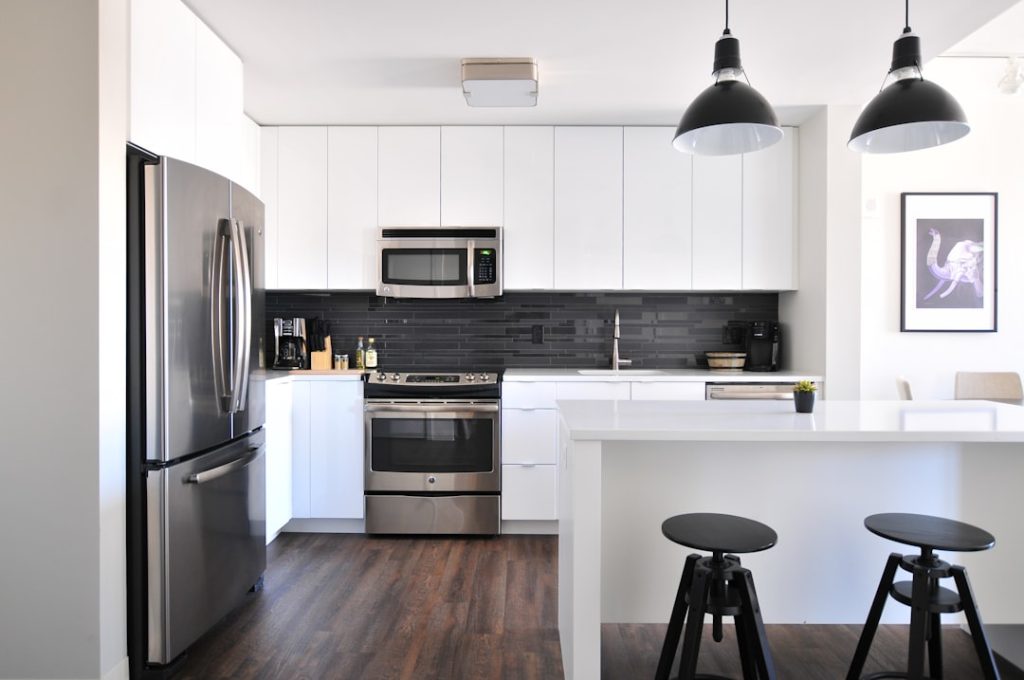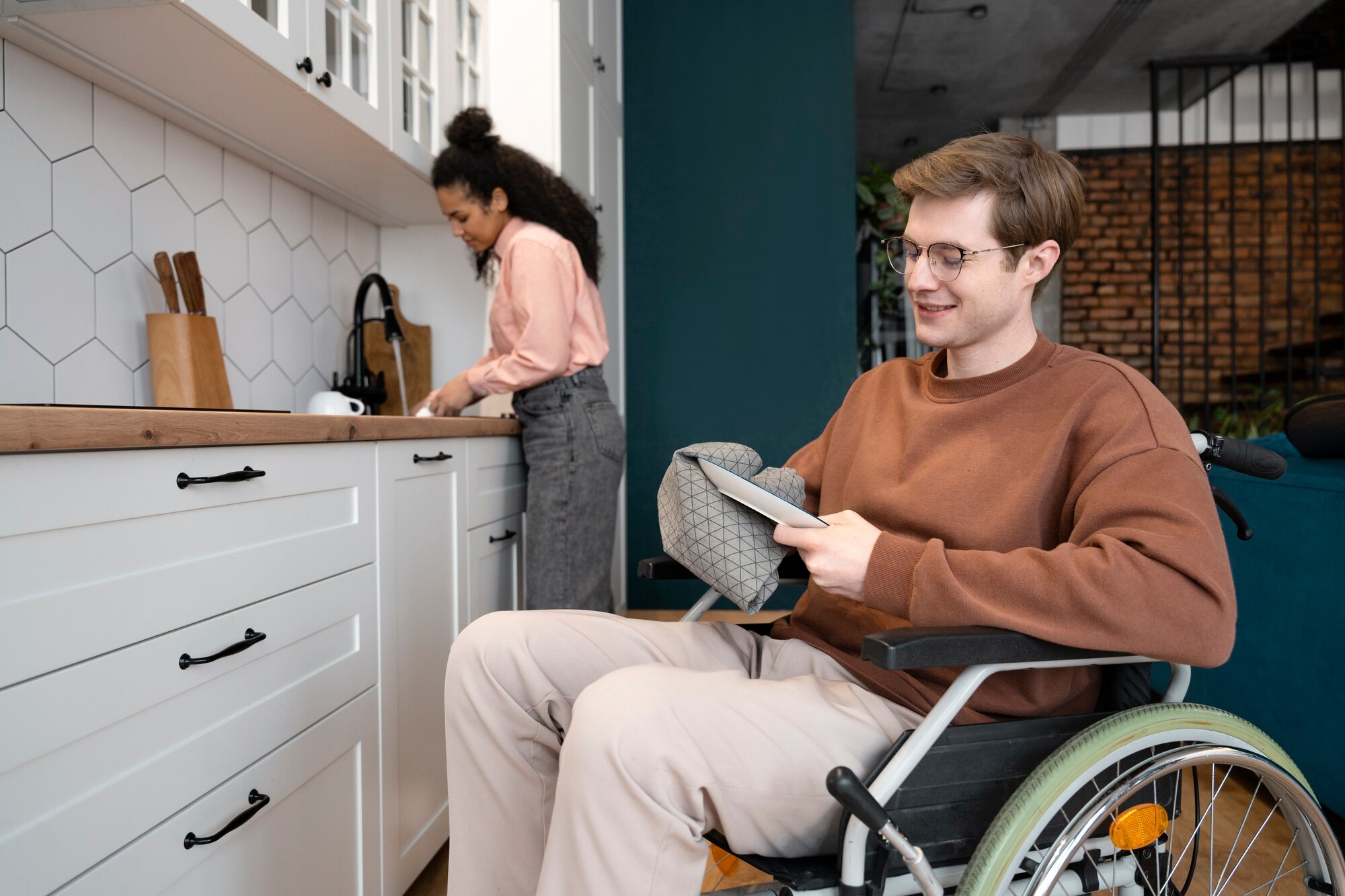Understanding Specialist Disability Accommodation Options
Navigating the world of disability support services can be complex. One key aspect is understanding Specialist Disability Accommodation (SDA) options.
SDA homes are designed to meet the unique needs of individuals with disabilities. They provide a safe, comfortable, and accessible living environment.
But what exactly is Specialist Disability Accommodation? How does it differ from mainstream housing? And how can it enhance the quality of life for people with disabilities?
These are some of the questions we will answer in this article. We aim to provide a comprehensive guide to SDA homes and their benefits.
Whether you are an individual with a disability, a family member, a caregiver, or a healthcare professional, this guide will help you understand the various SDA options available.
Join us as we delve into the world of Specialist Disability Accommodation.

What is Specialist Disability Accommodation (SDA)?
Specialist Disability Accommodation, or SDA, refers to housing specifically designed for people with disabilities. These homes are tailored to meet the unique needs of individuals who require special design features or support.
SDA homes are not just about physical structures. They also encompass the broader living environment. This includes the location of the home, access to community services, and the ability to live independently.
SDA homes can take various forms, including:
- Apartments
- Houses
- Group homes
- Shared living arrangements
The design of SDA homes is guided by specific categories. These categories reflect the level of physical support required by the residents. They range from ‘Improved Liveability’ to ‘High Physical Support’.
Understanding SDA is crucial for individuals with disabilities, their families, and caregivers. It helps them make informed decisions about housing options that best suit their needs and preferences.
In the next sections, we will delve deeper into the importance of SDA, the eligibility criteria, and the different design categories.
The Importance of SDA in Enhancing Quality of Life
SDA plays a crucial role in enhancing the quality of life for people with disabilities. It provides a living environment that caters to their unique needs. This can significantly improve their comfort, safety, and independence.
Moreover, SDA homes are designed to promote social inclusion. They are often located in communities with easy access to services and amenities. This allows residents to participate in community life, fostering a sense of belonging.
The adaptability of SDA homes is another key benefit. These homes can be customized to accommodate changing needs over time. This flexibility ensures that residents can continue to live comfortably as their needs evolve.
Lastly, SDA aligns with the goals of the National Disability Insurance Scheme (NDIS). It supports the NDIS’s mission to empower individuals with disabilities to live fulfilling, inclusive lives.
Types of Disabilities and SDA Eligibility
SDA is designed for individuals with severe functional impairments or very high support needs. This includes a wide range of disabilities. For instance, physical disabilities, intellectual disabilities, and neurological conditions.
Eligibility for SDA is determined by the National Disability Insurance Agency (NDIA). They assess the individual’s needs and circumstances. This includes their level of disability, their current living situation, and their long-term goals.
It’s important to note that not all individuals with disabilities will be eligible for SDA. However, those who are can benefit greatly from the tailored support and accommodation it provides.
Learn more about 4 Types of Specialist Disability Accommodation here >>
Exploring SDA Design Categories
SDA homes are designed to cater to a variety of needs. They are classified into four main design categories. Each category is tailored to different levels of physical support and accessibility.
- Improved Liveability: These homes are designed for people with sensory, intellectual or cognitive impairments. They feature a design that is easy to understand and use.
- Fully Accessible: These homes are designed for people with significant physical impairment. They are built to be accessible with a wheelchair.
- Robust: These homes are built for people with behaviours of concern or complex needs. They are designed to reduce the likelihood of damage and minimise the risk of harm.
- High Physical Support: These homes are designed for people with significant physical impairment. They have a high level of physical support, including assistive technology and equipment.
Understanding these categories can help individuals and their families make informed decisions about the right SDA home for their needs.
The Role of the NDIS in SDA
The National Disability Insurance Scheme (NDIS) plays a crucial role in SDA. It provides funding for eligible individuals to access suitable housing.
The NDIS recognizes the importance of appropriate accommodation for people with disabilities. It aims to enhance their quality of life and promote independence.
To access SDA funding, individuals must meet specific eligibility criteria. This includes having an extreme functional impairment or very high support needs.
The NDIS works with various SDA providers. This ensures a range of housing options are available to meet diverse needs.
How to Access SDA: The Approval Process
Accessing SDA involves a detailed approval process. It starts with an assessment by the NDIS or an allied health professional.
This assessment determines the individual’s eligibility. It considers their functional impairment and support needs.
If eligible, the individual’s NDIS plan will include SDA funding. This funding covers the cost of accommodation, not support services.
Choosing an SDA provider is the next step. It’s crucial to find a provider that meets the individual’s specific needs.
Finally, the individual moves into their SDA home. This transition is often supported by disability support services.
Choosing the Right SDA Provider and Home
Choosing the right SDA provider is a critical step. The provider should have a proven track record in delivering quality SDA homes.
The chosen home should meet the individual’s specific needs. It should be in a suitable location with access to necessary amenities.
The home’s design should align with the individual’s disability. It should promote independence and enhance quality of life.
It’s also important to consider the provider’s support services. These services should complement the SDA home and the individual’s needs.
Lastly, the individual should feel comfortable and safe in the home. After all, it’s not just a house, but a home.
The Future of SDA Homes: Trends and Innovations
The future of SDA homes is promising. Technological advancements are paving the way for innovative solutions.
Smart home technology is one such trend. It can enhance accessibility and independence for residents.
Sustainable and eco-friendly practices are also gaining traction. They contribute to a healthier living environment and a sustainable future.
Personalization in home design is another trend. It ensures that the home aligns with the individual’s unique needs and preferences.
Lastly, partnerships between various sectors are expanding SDA availability. This collaboration is crucial for meeting the growing demand for SDA homes.
Conclusion: The Impact of SDA on Social Inclusion and Participation
SDA homes play a pivotal role in promoting social inclusion. They provide a platform for individuals with disabilities to participate fully in society.
These homes also foster a sense of community. They enable residents to live close to services, amenities, and social networks.
Moreover, SDA homes uphold the dignity and rights of individuals with disabilities. They align with the United Nations Convention on the Rights of Persons with Disabilities.
In conclusion, SDA homes are more than just physical structures. They are a crucial part of the broader movement towards disability rights and advocacy.





Leave a Reply